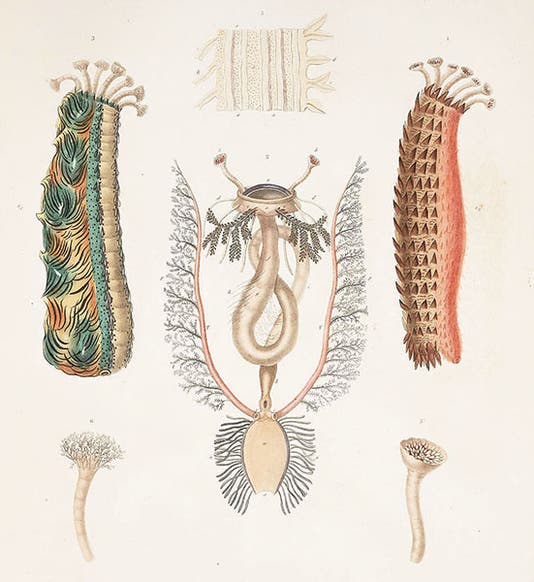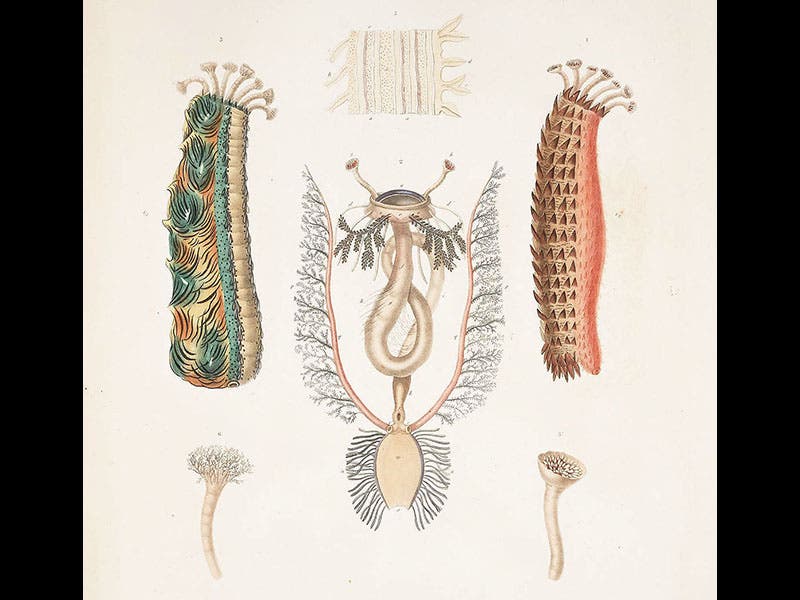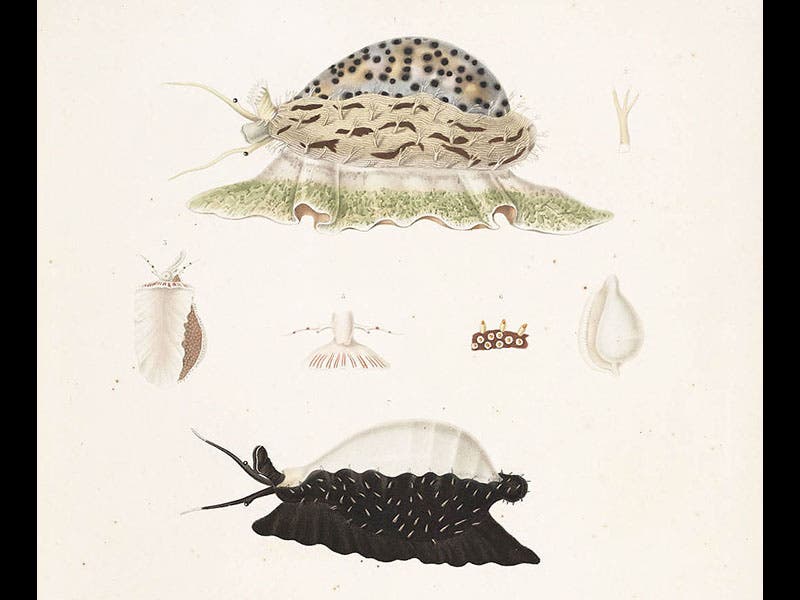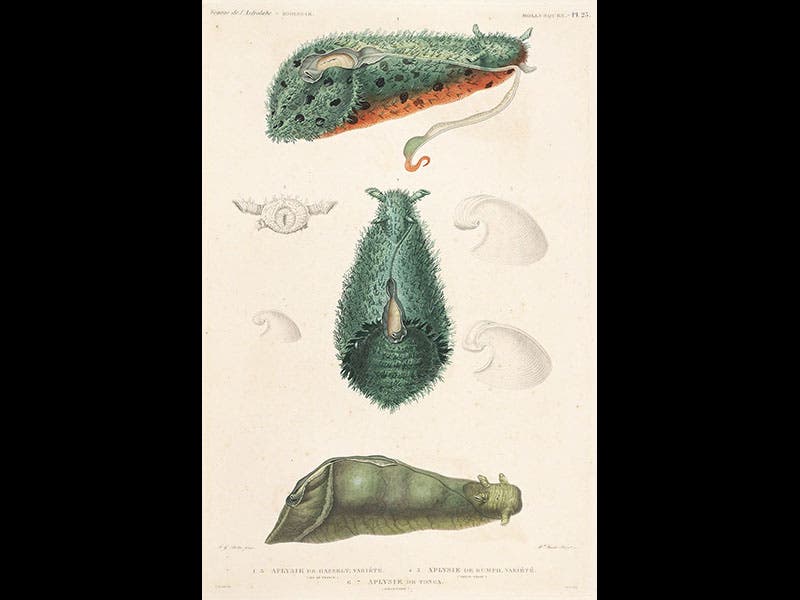Scientist of the Day - Jean René Constant Quoy
Jean René Constant Quoy, a French naturalist and surgeon, was born Nov. 10, 1790. When France began sending out waves of post-Napoleonic voyages of exploration after 1815, Quoy rushed to volunteer, signing on as surgeon for the around-the-world voyage of the Uranie in 1817. The assistant surgeon was Joseph Paul Gaimard. The Uranie returned successfully in 1820 (well, the voyagers returned, but the Uranie sank, with many of the collected specimens, in the Falkland Islands), and Quoy and Gaimard couldn’t wait to re-embark. So when the Astrolabe was sent out in 1826, Gaimard was appointed surgeon, and Quoy was given a new position--for the French navy--“le naturaliste." The mission of the Astrolabe was to discover the fate of La Perouse, whose ships (including the original Astrolabe) and crew had gone missing somewhere in Melanesia in 1788. Quoy and Gaimard busied themselves with collecting invertebrates, something most previous naval naturalists had ignored. Quoy developed the habit of sketching his specimens in color immediately after collecting them, since he discovered that the colors of corals, barnacles and other such creatures change rapidly after death.
When the narrative of the voyage was published between 1830 and 1834 (and yes, they did discover where La Perouse and his crew had perished), Quoy and Gaimard wrote the 4-volume section on Zoology, which was illustrated by three folio atlases filled with beautiful engravings. Invertebrates had never looked so good! We show just a sample above, including several sea cucumbers (first image), two cowries (second image), and an entire plate showing a variety of invertebrates (third image). One unusual feature of the plate volumes is that each plate was printed twice, first in black and white, to show detail, and then with added color, to knock your socks off. We see above both versions of a plate of helmet snails (fourth and fifth images).
Because these illustrations seem to exemplify the "Grandeur of Life," we included one of the Zoology plate volumes in our 2009 exhibition by that name, where we opened it to a plate depicting several sea hares. You can see the entire plate above (sixth image), and a detail of one sea hare (and an anemone) if you visit the online catalogue.
Dr. William B. Ashworth, Jr., Consultant for the History of Science, Linda Hall Library and Associate Professor, Department of History, University of Missouri-Kansas City. Comments or corrections are welcome; please direct to ashworthw@umkc.edu.












